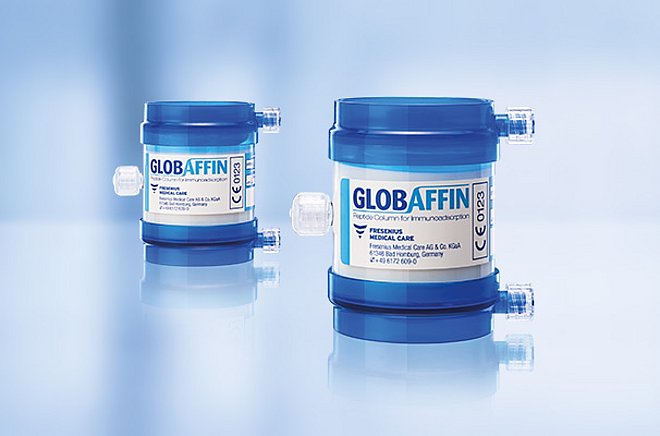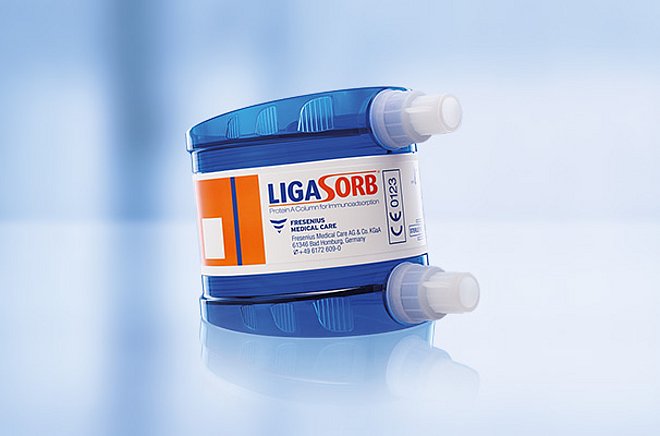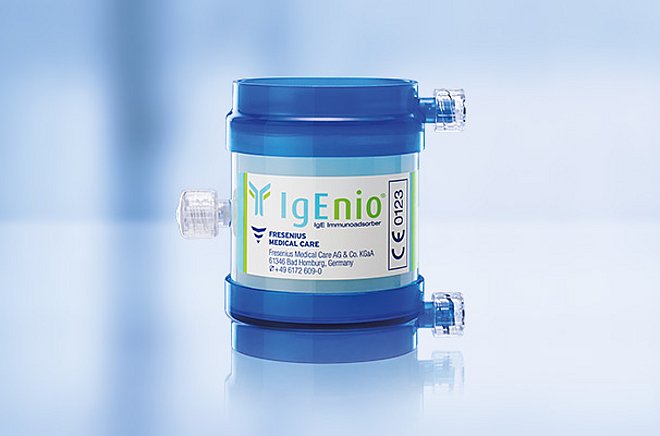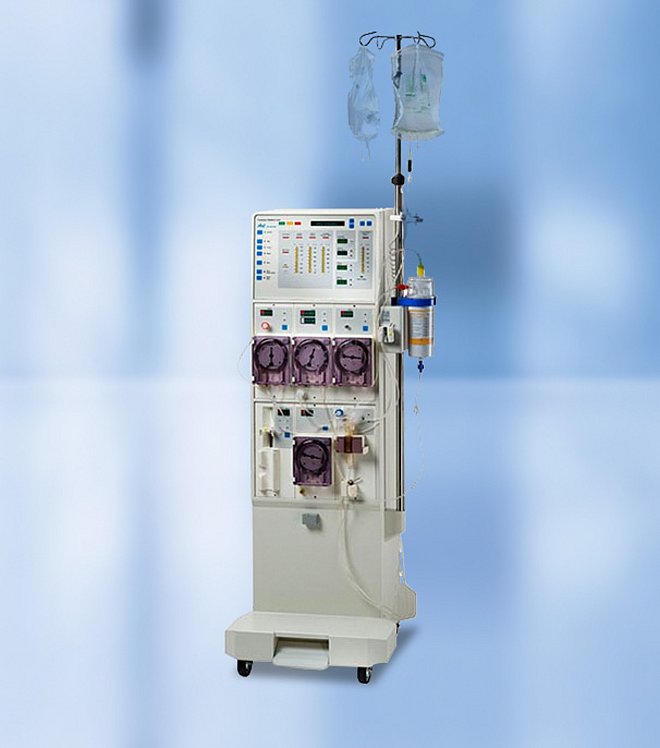Skin and dermatology
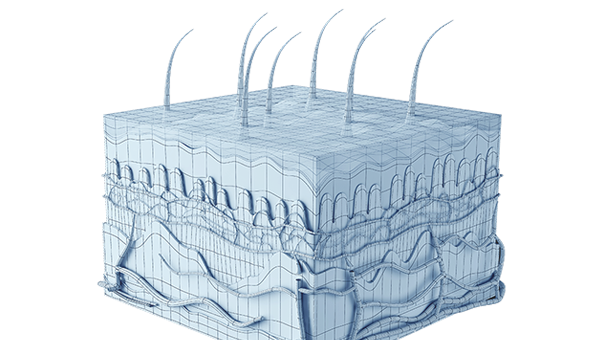
Dermatology-related clinical indications
Aside from the well-known indication of Pemphigus vulgaris, which is treated with therapeutic apheresis techniques, there is sustained and rising interest in IgE-related skin diseases as new candidates for extracorporeal cleaning. The indication of atopic dermatitis is of key interest here, a condition where patients may benefit from the use of adsorption for the purposes of IgE removal.
Atopic dermatitis
Atopic dermatitis, or eczema, is a severe skin condition involving allergic hypersensitivity reactions and, in most cases, characterised by the excessive deposition of immunoglobulin type E in the cutaneous compartments. The prevalence of atopic dermatitis is estimated to be 15–30% in children and 2–10% in adults. It often begins in childhood and can be associated with allergic asthma and rhinitis. In severe forms, more than 30% of the body surface can be affected, having a significant impact on quality of life.1 Topical ointments, physical therapy and immunosuppressive agents are established treatment options. In severe cases, the use of immunoadsorption methods to remove IgE has also proven to be clinically effective.2
Pemphigus vulgaris
Autoimmune blistering disorders are characterised by autoantibodies directed against structural proteins in the skin and/or mucous membranes. In pemphigus, autoantibodies target desmoglein 1 and 3. In the pemphigoid group, variants of collagen and laminin are recognised. Patients with pemphigus are particularly difficult to treat and in a substantial number of cases, standard regimens cannot adequately control the disease.
Patients resistant to therapy are, for the most part, poor responders to existing immunosuppressive pharmaceutical treatment. Immunoadsorption, on the other hand, provides safe and effective treatment that frees the body of autoantibodies within a few days and induces a visibly accelerated healing process. This has also been demonstrated in several studies.1,3
Other indications
In addition to the aforementioned indications, therapeutic apheresis can potentially be used to treat the following diseases:1,3
- Pemphigus foliaceus
- Bullous pemphigoid
- Pemphigoid gestationis
- Epidermolysis bullosa aquisita
1 WHO, Bieber T. N Engl J Med Apr. 2008; 358: 142. Meyersburg D, Schmidt E, Kasperkiewicz M, Zillikens D. Immunoadsorption in dermatology. Therapeutic Apheresis and Dialysis Aug. 2012; 16(4): 311–20.
2 Lupinek C et al, Extracorporeal IgE Immunoadsorption in Allergic Asthma: Safety and Efficacy, EBioMedicine, Mar. 2017; 17: 119–33.
3 Eming R, Hertl M. Immunoadsorption in pemphigus. Journal of Autoimmunity Nov. 2006; 39(7): 609–16.
